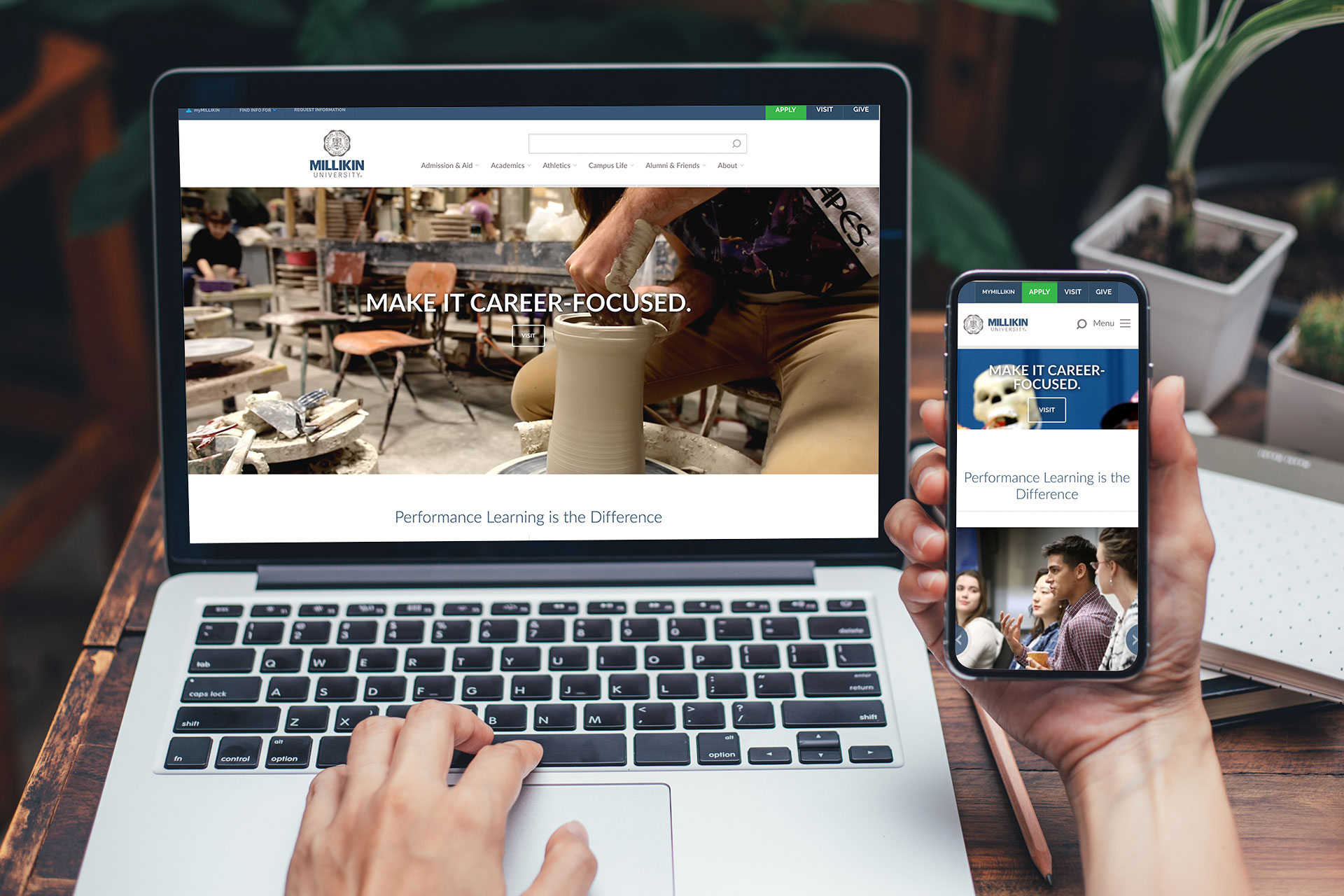

The redesigned millikin.edu website was developed in partnership with an external development firm, encompassing a full-scale redesign, a platform migration from SharePoint to Drupal 7, and the creation of a new information architecture. The project delivered a fully responsive, accessible website, featuring a modern design system and refined content strategy. Throughout the process, my team and I collaborated closely with stakeholders across the university to ensure the new site accurately represents Millikin’s identity, enhanced navigation, and adhered to best practices in usability and accessibility.
The transition to Drupal 7 provided Millikin University with a more flexible, scalable, and user-friendly content management system, allowing for greater autonomy and efficiency in managing site content across departments. The new platform streamlined workflows, enabling non-technical users to easily update and maintain their respective sections, fostering a more dynamic and up-to-date online presence. Additionally, the redesigned site prioritized mobile responsiveness and accessibility, ensuring seamless user experiences across all devices and for users of varying abilities. The updated information architecture improved content discoverability, drastically reducing bounce rates and enhancing user engagement.
During development, I implemented usability and accessibility best practices, adhering to W3C, WCAG, and usability.gov guidelines. I conducted comprehensive testing using tools such as usability testing, navigation tree testing, A/B testing, and heatmap analysis. By leveraging these insights, I applied iterative adjustments throughout the development process and post-launch, resulting in continuous improvements to site performance. Notably, through A/B testing, we achieved a 17% increase in site conversions for applications, highlighting the effectiveness of data-driven design decisions.
In collaboration with the marketing team, I led the development and execution of our first comprehensive social media strategy, aimed at boosting engagement and driving social referrals to our website. As part of this initiative, I integrated an Artificial Intelligence (AI) Chatbot on our Facebook page, leveraging AI and Machine Learning to enhance user interaction and improve conversion rates. The latest chatbot campaigns received an average open rate of 86% and a conversion rate of 38%.
By implementing Hootsuite as our social networking management platform, our department has been able to consistently post, creating a steady increase in site referrals. This implementation resulted in a 64% increase in referral conversions to our website. Additionally, our social media presence experienced significant growth, with a 21% increase in Facebook followers, a 68% rise on Instagram, and a 17% increase on Twitter.
Increase in Referral Conversions
Increase in Facebook Growth
Increase in Instagram Growth
Increase in Twitter Growth